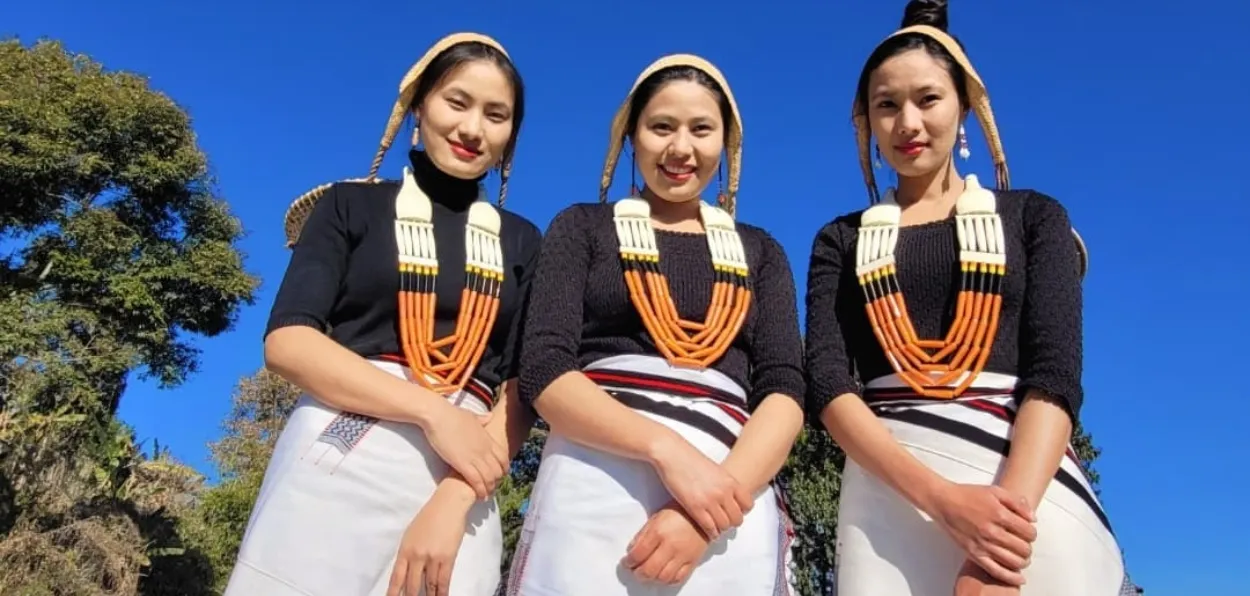
 Rajeev Narayan
Rajeev Narayan
Delhiites might brag about their designer showrooms and Mumbaikars their boutique-lined streets, but when it comes to high-end online shopping, the metros are being upstaged. The real action is in the misty hills of Nagaland, Mizoram, Manipur, and Meghalaya, where India’s ‘faraway’ shoppers are clicking their way to a retail revolution.
From serums to sneakers, the Seven Sisters in India’s North-East are splurging big online, leaving metros gasping and sending couriers scouting on hill roads.
According to the National Statistics Office’s Household Consumption Expenditure Survey, the Seven Sisters are not just shopping online—they’re shopping big, shopping stylish, and shopping fast enough to make the malls of Gurugram feel like Vedic relics.
The data is as eye-catching as a limited-edition iPhone rush. Nagaland surprised India when it recorded a per capita consumption expenditure leap of 17.4 percent last year, while rural Mizoram was up by 14.2 percent. Meghalaya’s urban areas surged by 22 percent, and Manipur was close behind at 21.8 percent.
These are not polite little jumps, but spending spikes that are sending statisticians double-checking their spreadsheets. This new spending is not being blown on just rice and dal, but going into high-end clothing, personal accessories, gadgets, as well as skincare serums and lipsticks, some of which cost more per ounce than gold.
The reasons are layered. Internet penetration has spread across the hills with the same speed that memes spread across WhatsApp groups. Smartphones are now as common as cups of tea—with them come reels, influencer recommendations, and TikTok tutorials. A lipstick shade launched in Seoul on Friday can be in a cart in Kohima by Saturday, and if the courier gods are kind, on someone’s lips by Monday. For the region’s young and digital-savvy, high-end shopping is not consumption; it is the celebration of a global conversation.
Tuned into Global Trends
Cultural flavour adds a twist. India’s North-Easterners are proud of their heritage, but deeply attuned to global trends. Thus, shoppers pair K-beauty moisturisers with local jackets, or order sneakers that look as comfortable in Brooklyn as they do in Aizawl’s winding lanes. Online platforms are catching on, curating collections that fuse tradition with trends. Once stereotyped as the land of handloom and handicraft, the North-East is now also being seen as a hotspot for high-street couture, delivered in cardboard boxes by a biker in uniform.
Rising financial capacity underpins this change. NSO data makes it clear… households in the North-East have disposable income, and the people are using it to move beyond necessities. What’s striking is the speed with which discretionary spending has taken off. In metro India, shoppers moved slowly from staples to statement. In the North-East, the graduation seems to have been a sprint. One year, you are buying cooking oil online, the next you are buying designer watches. Economists may call it a shift in the consumption basket; North-Eastern shoppers simply call it ‘catching up with the style wish-list’.
Admittedly, the shopping spree comes with challenges that no amount of disposable income can solve instantly. Logistics remain an Achilles’ heel. Roads wind, couriers crawl, and ‘two-day delivery’ often means ‘two-weeks-if-lucky’. Shipping charges can make lipsticks feel like luxury purchases. Connectivity is another bugbear. Many shoppers in Imphal have stared at a frozen payment page longer than they have looked at themselves in the mirror. What of returns? Well, once the parcel arrives, the people may be too exhausted to send it back.
Enthusiasm is Growing
There is magic in the shopping, and enthusiasm is not fading away. Delays are endured with humour, shipping costs are swallowed with a grimace, and poor connectivity is mocked, not mourned. Consumers sometimes curse the courier, but don’t abandon the cart. The desire for high-end goods is too strong. If resilience had a brand ambassador, it would probably be a Mizo shopper waiting patiently for her serum to arrive while cracking jokes about how it might expire before it is delivered.
Nagaland and Mizoram are the undisputed torchbearers. Dimapur is buzzing with online purchases of jewellery, sneakers, and apparel, while Aizawl’s shoppers have made high-end beauty products as much a staple as rice wine. Meghalaya and Manipur are only slightly behind, their households growing into stylish residences at a pace that rivals the best metro suburbs.
Sure, the metros still dominate in pure size, but the craze and growth rates in the North-East make them look sluggish. It’s like watching a sprint and a marathon—the metros still have distance on their side, but the hills are running with way more energy.
Mixed Bag for Marketers
For e-commerce companies, the surge of the online market in India’s North-East is both a dream and a logistical nightmare. The market is young, hungry, and aspirational, but the infrastructure leaves much to be desired. The government, for its part, has a chance to smooth the trot by building better roads, a stronger Internet, and efficient courier services. That could transform the North-East into not just a promising market but a trendsetting hub—if policymakers want proof that development fuels aspiration, they need only look at the shopping baskets in Mizoram and Nagaland.
Thus, the next time someone thinks that India’s consumer culture is dictated by Delhi malls or Mumbai boutiques, tell them that the real trendsetters are sitting in cafés in Shillong and hostels in Kohima, scrolling through luxury goods with one hand and sipping chai with the other. India’s metros might still be size kings, but the North-East is the style queen.
READ MORE: Rajasthan's First Female Qazi Nishat Hussain led legal battle against triple talaq
As the NSO’s spreadsheets confirm, when it comes to high-end shopping, the hills are not just alive with music, they are also alive with online shopping notifications. The Seven Sisters have decided that being high-end is not just an aspiration; it is already in the cart.
The writer is a veteran, journalist, and communications specialist.
